Best Affordable Full-Frame Cameras
We independently test the products and technologies that we recommend.

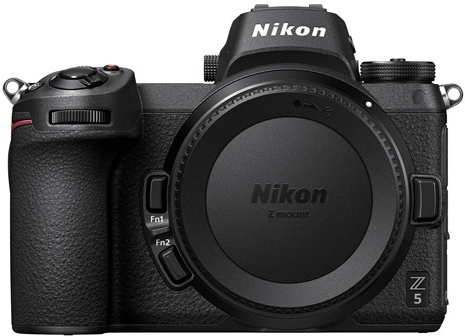
| Justbuy.com.ua | 38 110 ₴ | To Store |
| Цифра | 38 821 ₴ | To Store |
| Stylus.ua | 39 177 ₴ | To Store |
| Touch | 37 999 ₴ | To Store |
| Smartmag.biz.ua | 41 302 ₴ | To Store |
The Nikon Z5 model brings the concept of full-frame photography to a wide audience. It is a basic level mirrorless camera equipped with an image sensor full frame format.
The heart of the camera features a 24-megapixel sensor without back-illumination, supported by an EXPEED 6 image processing engine. ISO values of up to 6400 units are quite workable for it. Additionally, the sensor is mounted on a moving stabilizing platform that compensates for shifts across 5 axes. The in-body stabilization provides up to 5 stops of shutter speed or exposure compensation.
The camera uses 273 phase detection autofocus points on the sensor for focusing. It supports object tracking in the frame based on eye and face detection, including for pets. Framing is done via an electronic viewfinder "eye" or on a swivel screen with touch controls. Captured materials can be stored on two SD UHS-II cards, either sequentially on each flash or in parallel (on both at the same time).
The basic shortcomings of the model include modest continuous shooting speed of up to 4.5 fps, meaning the Nikon Z5 is not ideal for reportage photography. The camera also has limited 4K video recording capabilities, with a crop factor of 1.75x and a frame rate of 30 fps. In Full HD, data is read from the entire sensor plane and at a frame rate of 60 fps. However, it doesn't lack for dust and moisture protection — shooting in adverse weather conditions is confidently supported.
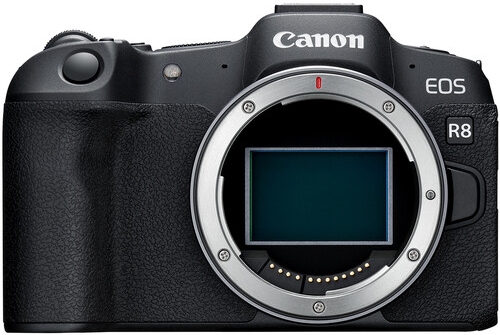
| Justbuy.com.ua | 51 560 ₴ | To Store |
| Moyo.ua | 62 999 ₴ | To Store |
| FOXTROT.UA | 62 999 ₴ | To Store |
| Touch | 50 999 ₴ | To Store |
| Repka.ua | 62 999 ₴ | To Store |
Canon EOS R8 is a full-frame mirrorless camera of an advanced amateur range. It is positioned as a simplified version of the Canon EOS R6 Mark II camera.
It inherited the 24-megapixel sensor and DIGIX X image processing engine from its senior counterpart. At the same time, the model gained an advanced Dual Pixel CMOS AF II phase autofocus system with object recognition functions in the frame based on artificial intelligence algorithms. The only "but" — the mirrorless camera lacks in-body stabilization. Shooting will rely on electronic stabilization or stabilized optics.
The mirrorless camera features a mechanical shutter, allowing continuous shooting at up to 6 fps. Users can also switch to an electronic shutter, offering a burst rate of up to 40 fps, though the memory buffer fills up quickly. The camera saves images on a single UHS-II SD memory card.
Video shooting is available at resolutions up to 4K at 60 fps. It is done from the entire sensor plane without significant duration limitations. Additionally, there is support for gamma curve profiles: 10-bit C-Log3 and HDR PQ. Compact size, lightweight design, and dust and moisture-resistant construction are further highlighted.
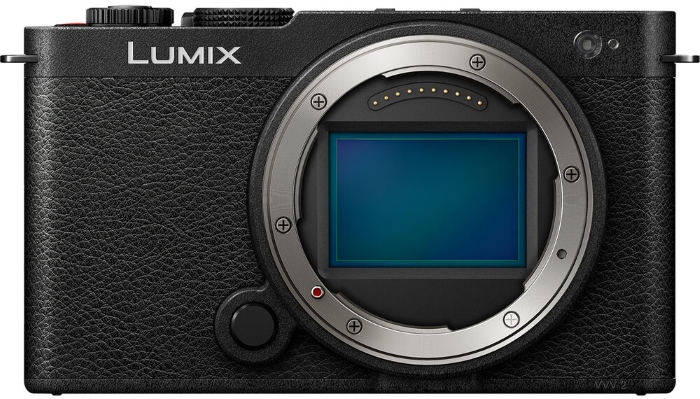
| Justbuy.com.ua | 49 785 ₴ | To Store |
| Moyo.ua | 64 999 ₴ | To Store |
| Touch | 53 249 ₴ | To Store |
| Repka.ua | 64 999 ₴ | To Store |
| Timesport.com.ua | 84 312 ₴ | To Store |
The miniature Panasonic DC-S9 camera completely overturns the notion that full-frame cameras are expensive and bulky.
Conceptually, this mirrorless camera is very similar to its "kindred spirit" Sony ZV-E1 — both cameras are equipped with full-frame imaging sensors in a compact body, sacrificing an electronic viewfinder to save space. Additionally, this model economizes by having only an electronic shutter. Conversely, it includes a 5-axis in-body image stabilizer, which is valuable for photo and video shooting.
The camera features a 24.2-megapixel sensor, supported by a hybrid phase autofocus system. The mirrorless camera can recognize objects in the frame and focus based on eyes or faces. The video is recorded at 6K at 30 fps (10 bit 4:2:0), 4K at 30 fps from the entire sensor plane, or 4K cropped at 60 fps (10 bit 4:2:2). Continuous recording time is 15 minutes. An operator can use a dedicated LUT button to access creative filters. New LUTs can be uploaded from a paired smartphone via the Lumix Lab mobile app.
The model is equipped with a dual memory card slot, a 3-inch touchscreen on a swivel joint, and all current wireless communications (Wi-Fi, Bluetooth, NFC). The mirrorless camera is available in classic black and three other leather body color trims: blue, burgundy, and olive. This full-frame "baby" from Panasonic truly looks cool.
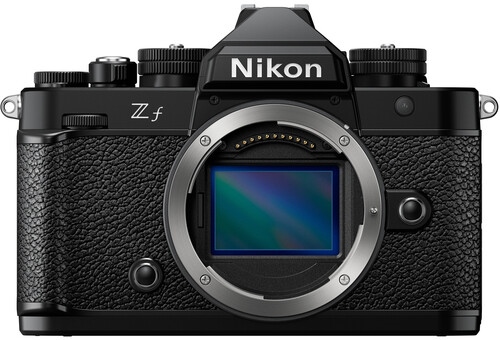
| Justbuy.com.ua | 75 780 ₴ | To Store |
| Moyo.ua | 97 266 ₴ | To Store |
| Itbox.ua | 114 202 ₴ | To Store |
| Touch | 70 599 ₴ | To Store |
| Smartmag.biz.ua | 68 630 ₴ | To Store |
The Nikon Zf image mirrorless camera will appeal to fans of vintage design. Inside the camera, there's a 24.5 MP full-frame sensor supported by a powerful EXPEED 7 image processing engine.
The camera is equipped with in-body stabilization with a claimed effectiveness of up to 8 stops of shutter speed or exposure, offering comfortable handheld shots and smooth video recording. Notably, the Nikon Zf records video with 10-bit color representation and 4:2:2 subsampling directly onto memory cards (XQD or SD UHS-II). Non-cropped 4K recording is possible at 30 fps, with a 1.5x crop factor for Ultra HD at 60 fps.
The model includes a 273-point autofocus system with object detection and advanced 3D tracking. It can focus in very low light conditions (down to -8.5 EV). Various shooting settings can be rapidly adjusted through dedicated dials for shutter speed, ISO, and exposure compensation adjustments. A mini-screen on the top panel also shows the set aperture value of the lens. The main display is mounted on a swivel joint and measures 3.2 inches diagonally. Focusing points can be selected by tapping on the screen.
For maximum detail capture, photographers can employ the Pixel Shift option, designed for shooting static scenes with pixel shifting, resulting in images with resolutions up to 96 MP. The closest counterpart to this model is the Nikon Z6 III mirrorless camera in a classic design, though it costs more.
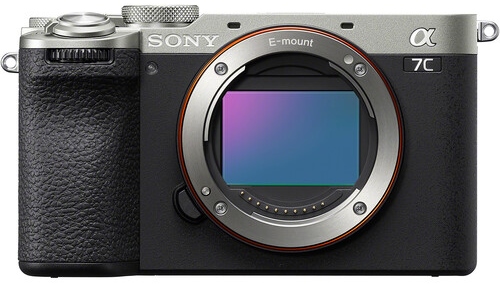
The compact Sony a7C II mirrorless camera in the likeness of a rangefinder camera is suitable for shooting at an advanced amateur and semi-professional level.
The second generation model received a 33-megapixel BSI sensor taken from the flagship Sony A7 IV camera. It is powered by a strong Bionz XR image processor, supplemented by an AI Processing Unit that handles fast hybrid autofocus with object detection in the frame. The mirrorless camera can focus based on the eyes, faces, animals, birds, insects, and vehicles.
The camera features an integrated in-body stabilization system with an advertised efficiency of up to 7 stops of shutter speed or exposure. It records videos in 4K at 30 fps (with oversampling from a 7K resolution), 4K at 60 fps with a 1.5x crop, and Full HD at 120 fps. Operators are kindly provided with 10-bit color representation, 4:2:2 subsampling, proprietary S-Log3, and S-Cinetone profiles.
The model is lacking a second memory card slot and a larger memory buffer, preventing it from claiming the title of a true professional instrument. However, all other serious camera attributes are present in this mirrorless — including an OLED viewfinder, a touchscreen on a swivel bracket, and a weather-sealed design. This camera will suit any photo and video shooting genres except for possibly reportage.
Articles, reviews, useful tips
All materials






























